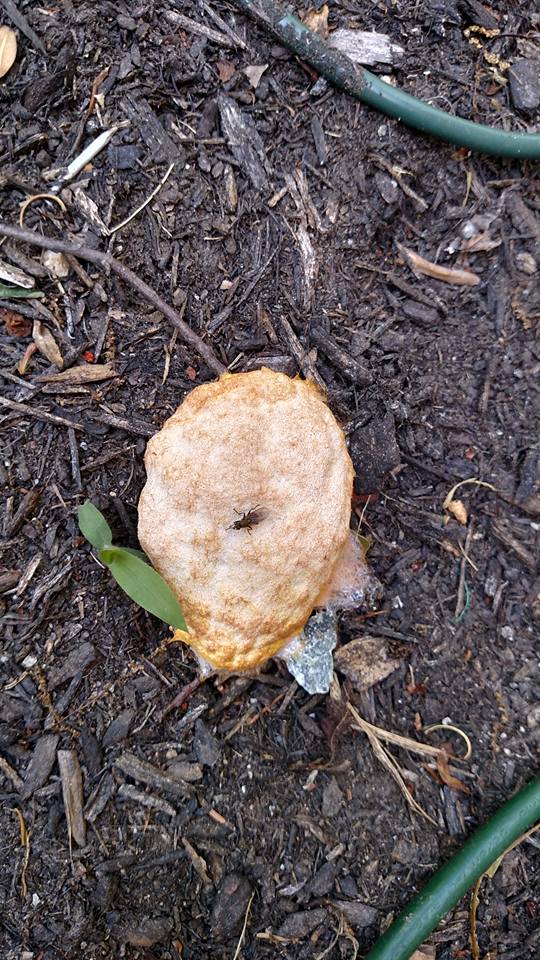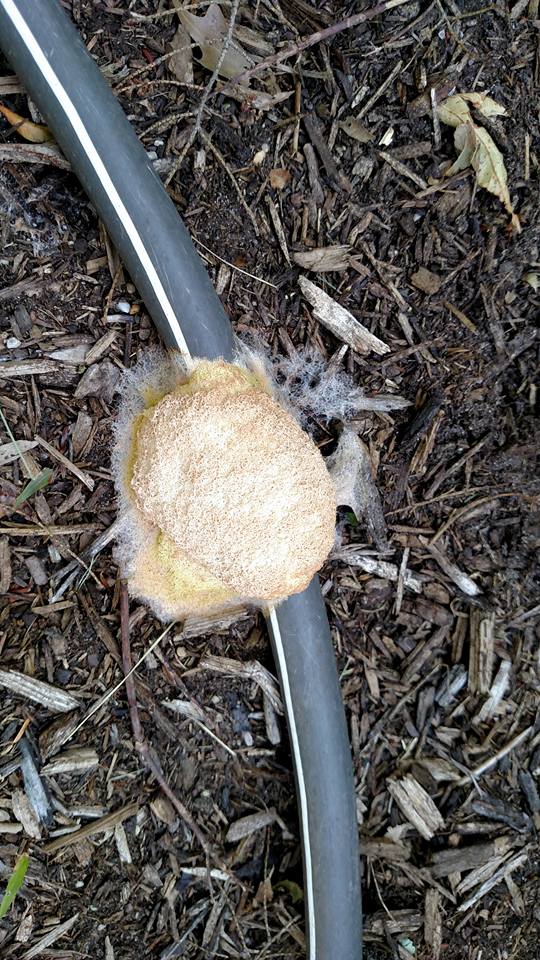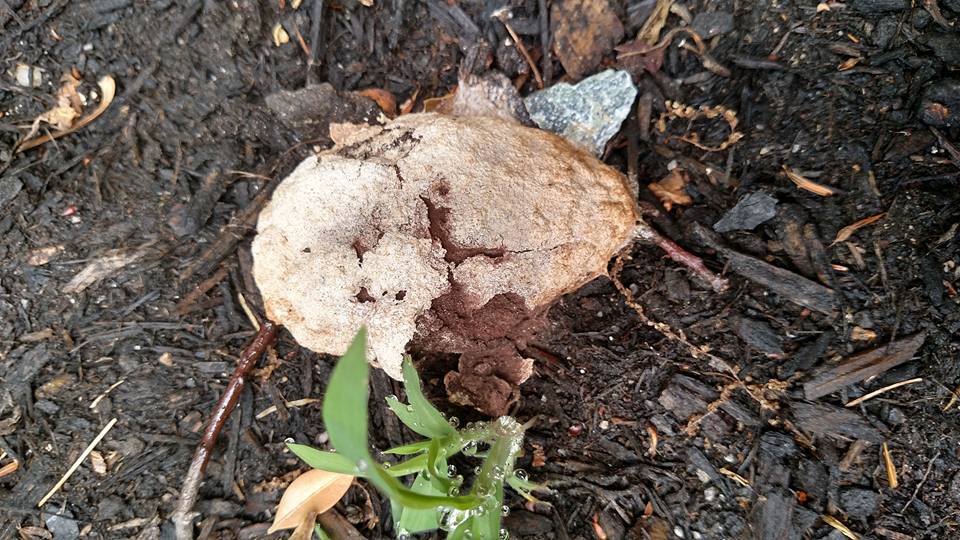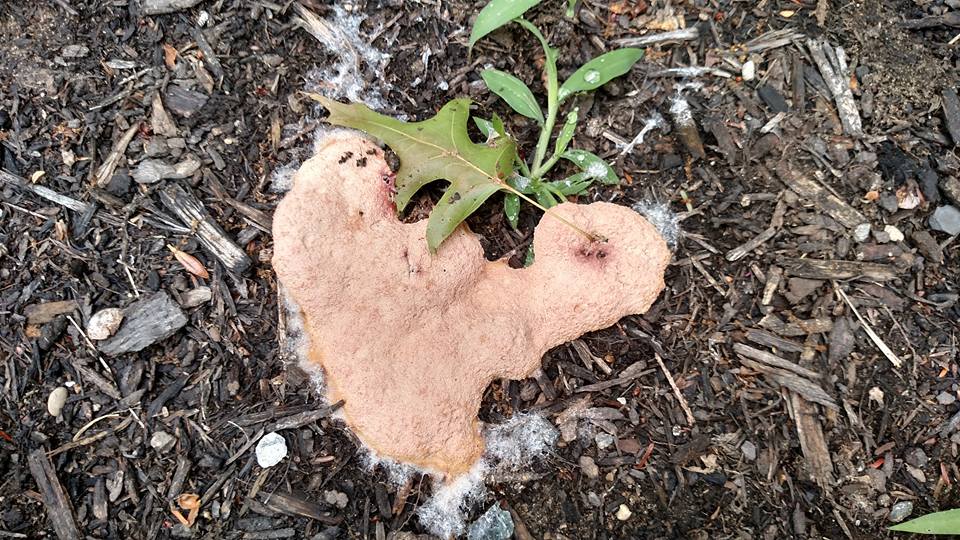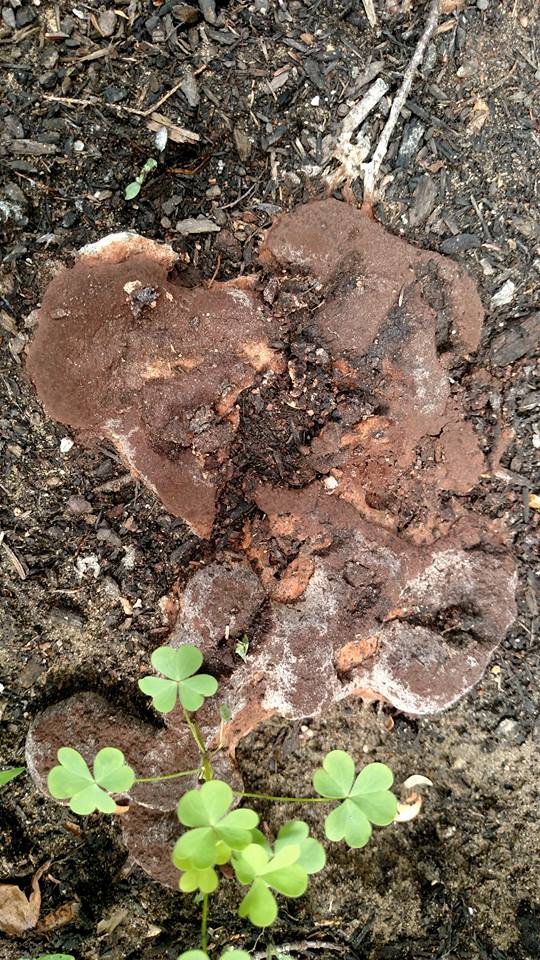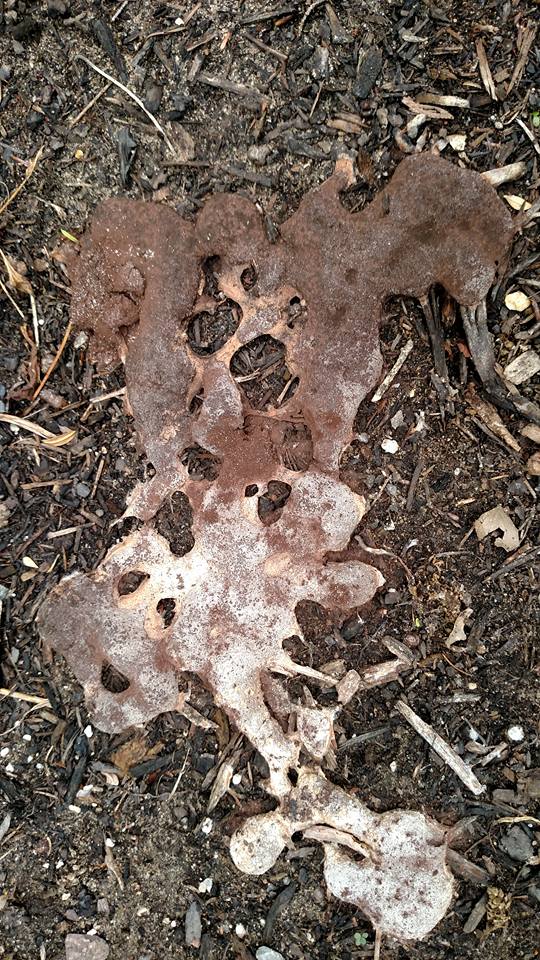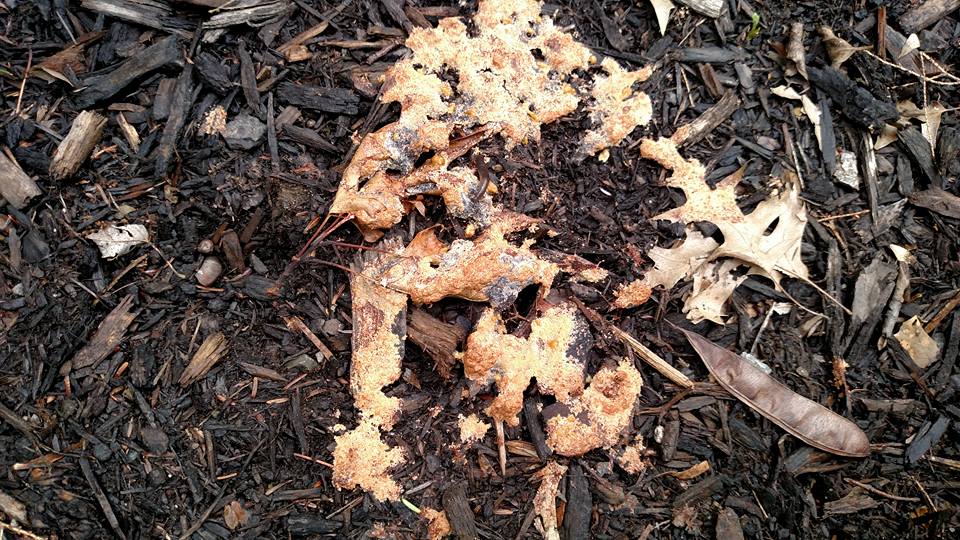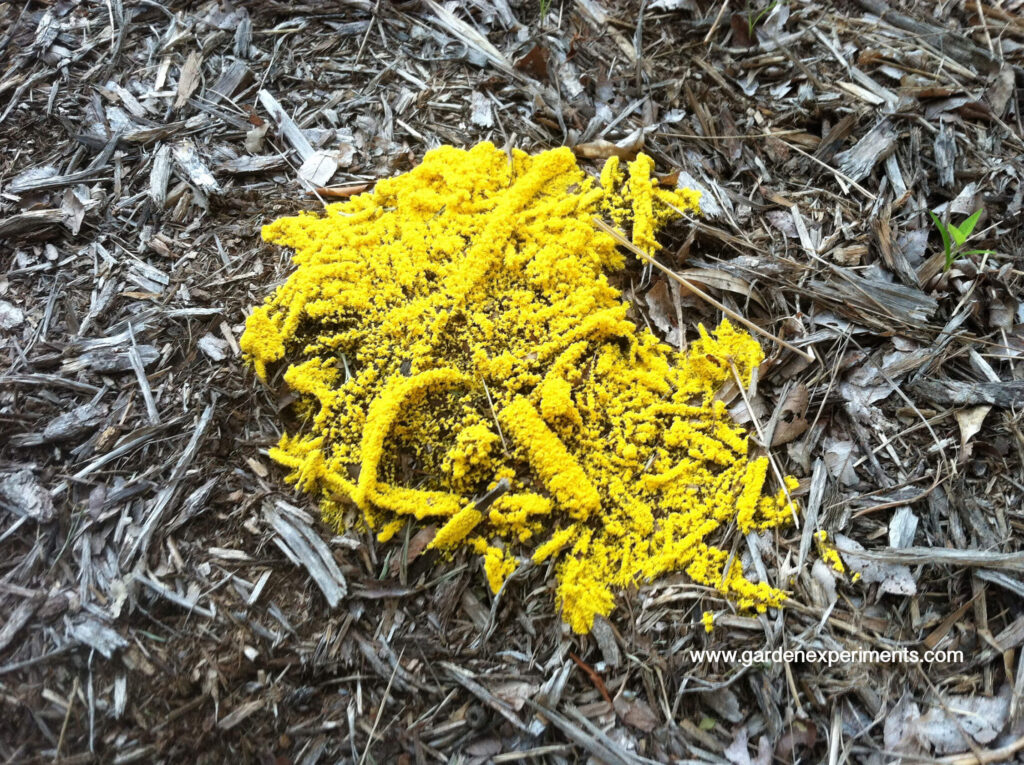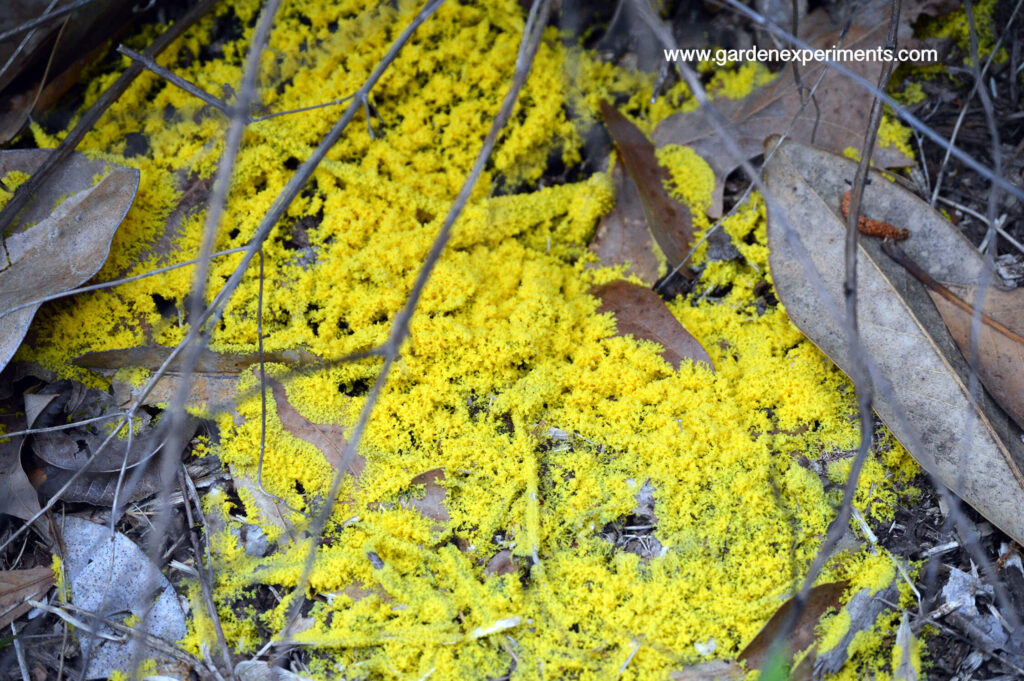
So you are walking around your yard one day and see a spot of bright yellow in your mulch. What in the world is that?
It’s a slime mold! This mold is Fuligo septica the vomit slime mold and it shows up in warm, humid conditions and spreads across the top of the material – usually wood mulch. It starts out rather beautiful (at least this one did), with bright colors and a feathery appearance, but in a few days it can really resemble dog vomit (hence the nickname). This slime mold feeds on the carbon in wood mulch and thrives in humid, wet conditions.
Not to worry! While this organism can be unattractive and persist for a while (as long as conditions stay moist), it isn’t harmful to your plants or garden. (Just don’t eat it.) After the moisture in the area is gone and conditions are unfavorable for continued growth, the mold will change colors and appearance (really starting to look like vomit), reaching the spore-producing stage and start to produce spores which are dispersed into new areas.
Late growth stage of the slime mold
(photos graciously provided by Emily Wahl Lamboy, used with permission)
What is a Slime Mold?
Slime molds might look like a fungus, but they are unique to their own kind and are not classified under Fungi. They are now classified under the kingdom Protista.
How to Avoid Slime Molds in Your Garden
If you want to try and avoid getting more slime molds in your mulch, try reducing the amount of moisture in that area by reducing watering or raking the mulch apart to allow air movement in that spot. You can also remove it with a shovel and place it in a trash bag. However, slime mold spreads with spores which are easily spread by water or air movement, making it difficult to completely remove. Be sure to avoid spraying it with a hose as that will help to disperse any spores.

Read more about the slime mold Fuligo septica here: http://botit.botany.wisc.edu/toms_fungi/june99.html

